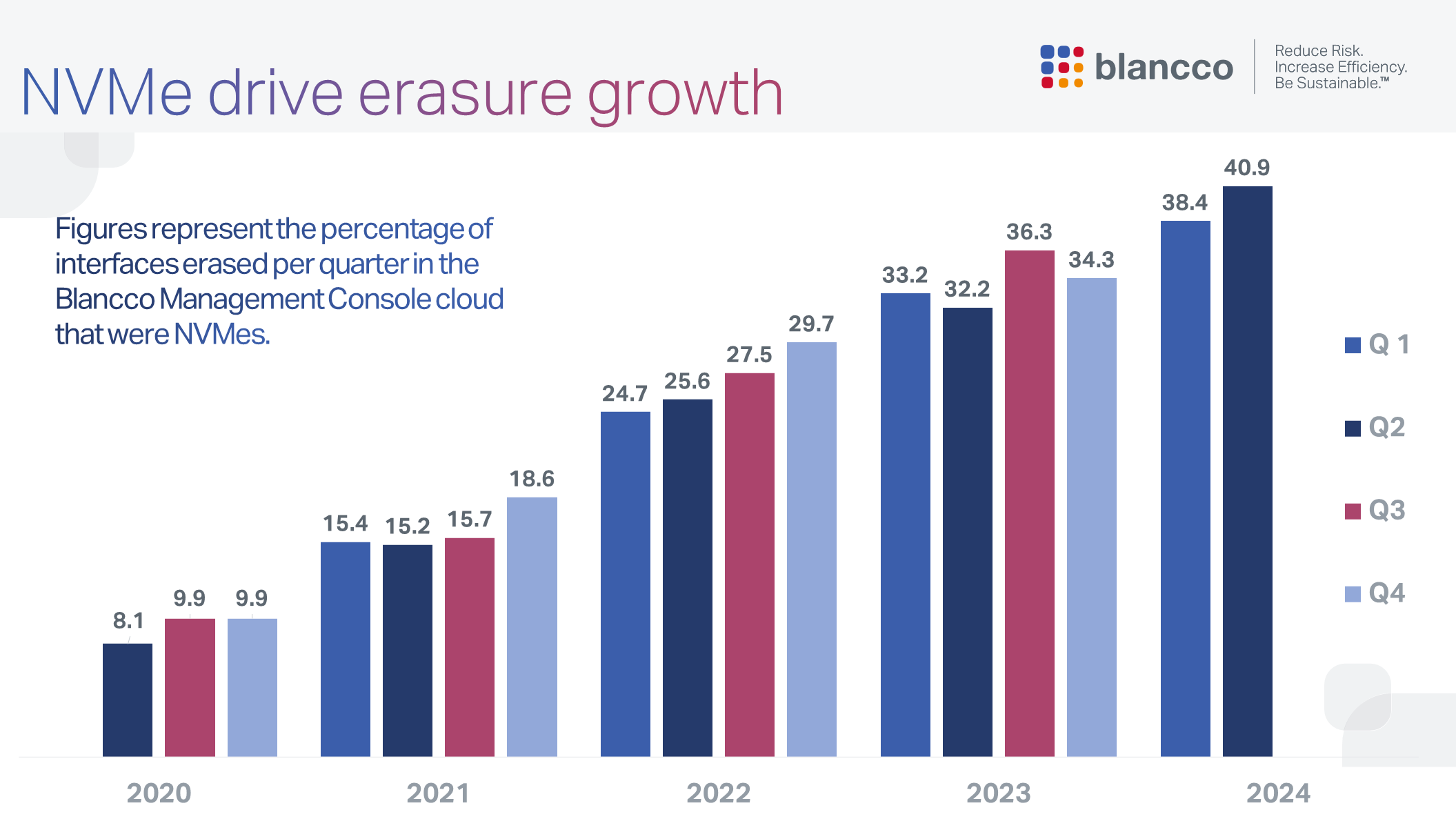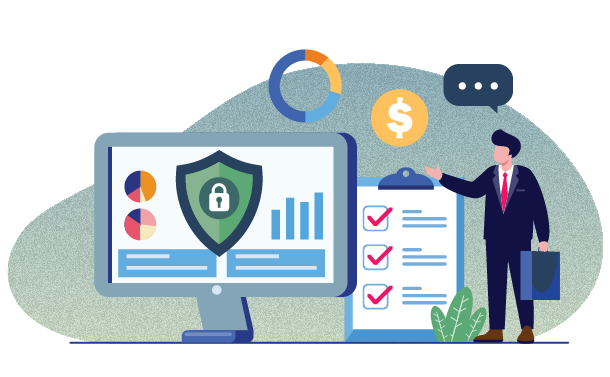E-waste generation is soaring, and recycling efforts are falling behind, with electronic waste increasing five times faster than documented recycling rates. This is a problem that’s projected to weigh 82 million tonnes by 2030.i
Everyone, from electronics recyclers to the organizations and enterprises they serve, is under immense pressure to address environmental impact while maintaining data security. SERI’s Responsible Recycling version 3 (R2v3) certification is a key standard for electronics recyclers, as it establishes responsible practices for managing and recycling used electronics assets worldwide.
As technology advances, it may be beneficial to complement broad standards like R2v3 with additional specialized guidelines to better manage the increasing variety and complexity of end-of-life assets. Emerging frameworks like IEEE 2883 and ISO 27040 are gaining importance and may soon be required for electronics recyclers wishing to access end-of-life enterprise stock. By incorporating these standards with R2v3, recyclers can more effectively tackle both security and sustainability challenges while meeting the escalating demands of modern enterprises.
R2v3 Reinforces Data Sanitization as a Key to Sustainable IT Disposal
While physical destruction of devices has traditionally been a go-to method for ensuring data security, it often conflicts with sustainability goals. Increasingly, organizations are seeking sustainable ITAD vendors, and certifications like R2v3 have become essential markers of compliance.
R2v3 emphasizes extending the lifecycle of electronic devices over destruction. This certification isn’t just a standard for data sanitization; it covers the operational processes required to achieve secure and sustainable recycling. Two tiers exist: Core Requirement 7, focused on physical destruction aligned with NIST SP 800-88 (or, “Media Sanitization Guidelines” from the National Institute for Standards and Technology) and Appendix B, which sets a higher bar for data sanitization, particularly for devices intended for reuse.
Appendix B of R2v3 requires data sanitization to be documented with software-generated records to ensure transparency, rather than relying solely on visual inspection. This documentation confirms that the sanitization process was performed, aligning with the certification’s focus on transparency and accountability. Additionally, R2v3 mandates regular audits and thorough records to verify that sanitization processes meet its standards, reinforcing the emphasis on transparent reporting and verification.
SERI uses NIST’s Clear and Purge levels as benchmarks to determine if a device is securely erased and safe for reuse. However, increasingly, these standards are just a starting point. Remember that the NIST’s latest guidelines for sanitization are ten years old, and many of the technologies in use today did not exist during NIST’s last revision. Consequently, guidance on achieving Clear and Purge levels for these newer technologies is limited.
In updating the R2 certification to version three, SERI addressed several ongoing challenges for electronics recyclers, including new devices, encryption, and gaps in data sanitization. These issues are linked to technological progress and are expected to persist as innovation continues.
This is where IEEE 2883, the latest recommended standard on media sanitization, along with its companion ISO 27040, can provide additional clarity. IEEE 2883 details how to sanitize various types of media, including complex drives, and provides specific methods for meeting R2v3’s reuse requirements. In contrast, ISO 27040 outlines when different sanitization methods should be applied, setting broader guidelines for the timing and application of data erasure processes.
IEEE 2883 and ISO 27040: Bringing Clarity to R2v3 Appendix B Standards
NIST Special Publication 800-88 is the most widely used data sanitization standard, but IEEE 2883, developed by the Institute of Electrical and Electronics Engineers, is emerging as a vital guidance for modern enterprise technologies. Although IEEE 2883 aligns with NIST 800-88, it offers additional guidance for addressing newer and more complex assets. As enterprises adopt IEEE 2883 to manage their end-of-life electronics, compliance with this standard will likely become a requirement for ITADs and recyclers.
Like NIST 800-88, IEEE 2883 has its own categories of sanitization levels. For IEEE, those levels are Clear, Purge, and Destruct and it provides more detailed guidance on achieving these levels for different devices. It also addresses newer, more complex media like SATA, SCSI, and NVMe drives. The latter is particularly valuable as NVMe use is growing rapidly. In fact, Gartner estimates that by 2026, captive NVMe SSDs will account for more than 30% of the total storage capacity used in on-premises data centers.ii
This demand jump is something we’ve seen at Blancco as well. Based on our erasure records in the Blancco Management Console cloud, the need for NVMe erasure has jumped dramatically in only a few years. In Q2 of 2020, approximately 8% of the drives erased were NVMes. In Q2 of 2024, NVMes made up over 40% of the drives erased in the Blancco Management Console cloud.
Based on external data and trends observed in end-of-life device processing, complex drives are rapidly becoming mainstream storage solutions. As technology advances, achieving complete data sanitization is becoming increasingly challenging, underscoring the need for ITADs and recyclers to implement robust sanitization processes.
Given the likely increase in encounters with complex drives, electronics recyclers should consider adopting updated standards such as IEEE 2883. Transitioning to these standards will enable more effective handling of advanced erasure requirements and enhance overall data security.

ISO 27040, updated in January 2024, complements IEEE 2883 by providing guidelines for advanced media sanitization.iii It aligns very well with the transparency, auditing, and verification functions of R2v3’s standards by recommending the following verification methods:
- Data recovery testing: Conduct tests to ensure that no sensitive information can be reconstructed from the sanitized media.
- Physical inspection: Verify that media has been physically destroyed or rendered unreadable through visual checks or physical destruction.
- Detailed verification reports: Maintain comprehensive records of the sanitization process, including methodologies used
and results achieved.
- Certified sanitization tools: Use tools that are certified for compliance with data sanitization standards to ensure reliability and effectiveness.
- Certificate of sanitization: Obtain a certificate of sanitization that includes:
– Manufacturer
– Model
– Serial number
– Media type (magnetic, flash, hybrid, etc.)
– Media source (user or system the media came from)
– Sanitization description (clear, purge, destroy)
– Sanitization method used (degauss, overwrite, block erase, etc.)
– Tool used (including version)
– Verification method (full, quick sampling, etc.)
– Name, title, contact information, and signature of the person performing sanitization
– Date, time, and location of completion
The methods suggested under ISO 27040 can also help organizations adhere to the audit requirements detailed under R2v3. When used in conjunction with the recommendations made in IEEE 2883, electronics recyclers can future proof their compliance and maintain sustainability.

Meeting Tomorrow’s Data Security Demands with Flexible Standards
There will always be new, complex devices entering the market for which solutions haven’t yet been fully developed. As technology advances, gaps in existing standards and practices may become more apparent, requiring ongoing adaptation and enhancement of data security protocols.
IEEE 2883 is designed to keep pace with technological advancements and accelerate the speed at which updates can address new developments. As of this writing, there are already two Project Authorization Requests (PARs)—which are requests to initiate the standard creation process—in place.iv These PARs aim to address virtualized and cloud storage sanitization, as well as clarify the overall use of sanitization methods.
Finally, while IEEE 2883 provides detailed guidance on sanitizing specific media, it also serves as a flexible framework. This framework allows organizations to tailor the sanitization processes to their unique requirements, adapting the standard to fit different operational environments, compliance needs, and new data storage technologies. This flexibility makes IEEE 2883 not only future-proof but also adaptable to a wide range of real-world applications.
In addition, ISO 27040 is designed to be technology-agnostic. Its guidelines and principles for data sanitization focus on core objectives and methodologies rather than specific technologies. This means that ISO 27040’s practices can be applied across various types of storage media and new technologies as they emerge. The standard’s flexible framework allows organizations to maintain effective data sanitization practices without needing to constantly update their processes for each new technology.
Both standards address the data sanitization components of R2v3 by providing methods that go beyond the basic requirements for securely erasing assets for reuse. By implementing ISO 27040 and IEEE 2883 guidance, electronics recyclers can meet the growing demand for secure and sustainable end-of-life asset processing.
Predictions on the Future of R2
Based on a post from R2 celebrating its 1000 Certified Facility mark, organization leadership anticipates future updates to the R2 standard will focus on advanced technologies and practices aimed at reducing carbon footprints and improving waste management. The R2 standard will likely expand its scope to include a broader range of electronic waste and emerging technologies. This includes categories such as AI systems and IoT devices, ensuring the standard addresses new recycling challenges. Future revisions of the R2 standard are also expected to place a greater emphasis on data security due to rising concerns about data breaches and stricter privacy laws.v
While SERI’s statement does not address IEEE 2883 or ISO 27040 specifically, it is reasonable to assume these frameworks could help to guide the industry in enhancing data handling practices. However the R2 standard evolves, incorporating these standards will be helpful for achieving compliance and addressing new challenges.
On top of that, enterprises may soon require compliance not just with R2v3 in general, but IEEE 2883 and ISO 27040 in particular, from their electronics recyclers to meet stringent data security and environmental regulations. Together, these standards will ensure that data management practices remain resilient and compliant as the industry faces new challenges in sanitizing even the most complex data storage assets.
i Global E-waste Monitor. (2024). The Global E-waste Monitor 2024. E-Waste Monitor. https://ewastemonitor.info/the-global-e-waste-monitor-2024/
ii Mellor, C. (2023, September 7). Gartner storage trends for 2023. Blocks and Files. https://blocksandfiles.com/2023/09/07/gartner-storage-trends-2023/
iii International Organization for Standardization. (n.d.). ISO/IEC 27040:2024 - Information technology — Security techniques — Storage security. https://www.iso.org/standard/80194.html
iv IEEE. IEEE Standard for the adoption of the Institute of Electrical and Electronics Engineers (IEEE) Standard for Software Quality Assurance Processes (IEEE Std 2883). https://standards.ieee.org/ieee/2883/10277/
v Sustainable Electronics Recycling International. R2 at 1K: A new frontier for certification. Sustainable Electronics Recycling International. https://sustainableelectronics.org/r2-at-1k-a-new-frontier-for-certification/
As Vice President and General Manager of International Sales, Fredrik brings over 20 years of experience in IT security. This includes most recently leading Blancco’s data center and cloud erasure initiatives and before that, founding SafeIT, a security software company focusing on encryption and selective data erasure. With a keen eye for streamlining corporate IT security efficiencies and maintaining compliance with data privacy legislation, he is regarded as a thought leader among customers and partners.